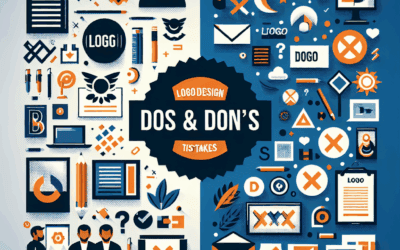Branding is a critical aspect of any business, big or small. It is the way in which a company defines itself to its customers and sets itself apart from the competition. For small businesses, effective branding can mean the difference between success and failure. In this guide, we will explore the key elements of branding and provide tips for small businesses looking to master the art of branding.
1. Define Your Brand
The first step in mastering the art of branding is to define your brand. This involves clearly articulating who you are as a company, what you stand for, and what sets you apart from the competition. Consider what values, mission, and personality you want your brand to embody. This will serve as the foundation for all of your branding efforts.
2. Know Your Target Audience
Understanding your target audience is essential to effective branding. You need to know who your customers are, what they want, and how they perceive your brand. Conduct market research, analyze customer data, and seek feedback to gain insight into your target audience. This will help you tailor your branding efforts to better resonate with your customers.
3. Develop a Unique Voice and Visual Identity
Your brand’s voice and visual identity are key components of branding. Your brand voice is the tone and language you use in all of your communications, while your visual identity includes your logo, color palette, and design elements. Develop a consistent voice and visual identity that reflects your brand’s personality and resonates with your target audience.
4. Create a Brand Story
Consumers connect with brands that have a compelling story to tell. Develop a brand story that highlights your company’s history, values, and mission. Your brand story should resonate with your target audience and convey why your brand is unique and valuable to them.
5. Consistency is Key
Consistency is essential to effective branding. Ensure that your brand is consistently represented across all of your marketing channels, including your website, social media, and advertising. Consistent branding helps build brand recognition and reinforces your brand’s message to customers.
6. Engage with Your Audience
Engaging with your audience is a crucial part of branding. Interact with your customers on social media, respond to feedback and reviews, and seek input from your audience. Building relationships with your customers helps strengthen brand loyalty and can lead to valuable word-of-mouth marketing.
7. Monitor and Adapt
Branding is an ongoing process that requires monitoring and adaptation. Pay attention to how your brand is perceived by customers, track the success of your branding efforts, and be willing to adapt your branding strategy as needed. Continuously refining and improving your brand will help ensure its long-term success.
Conclusion
Mastering the art of branding is essential for small businesses looking to stand out in a crowded market. By defining your brand, knowing your target audience, developing a unique voice and visual identity, creating a compelling brand story, maintaining consistency, engaging with your audience, and monitoring and adapting your branding efforts, you can effectively build and strengthen your brand. Remember, branding is not a one-time effort but an ongoing process that requires dedication and attention to detail. By following the tips outlined in this guide, small businesses can effectively master the art of branding and position themselves for long-term success.
Need Custom Logo Design? Discover our Logo Design Service
Discover all our Digital Marketing Services
Free Logo Design Strategy Call




0 Comments